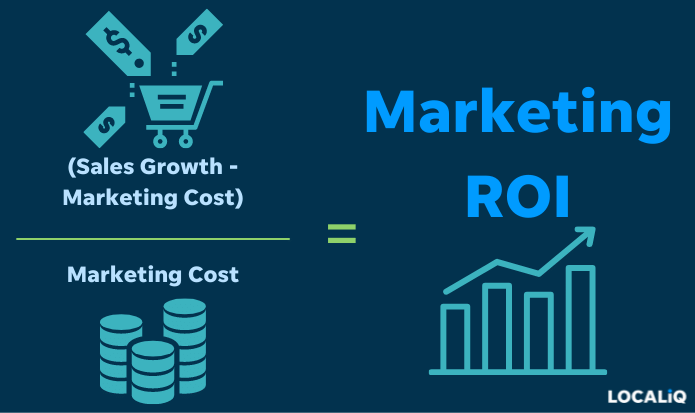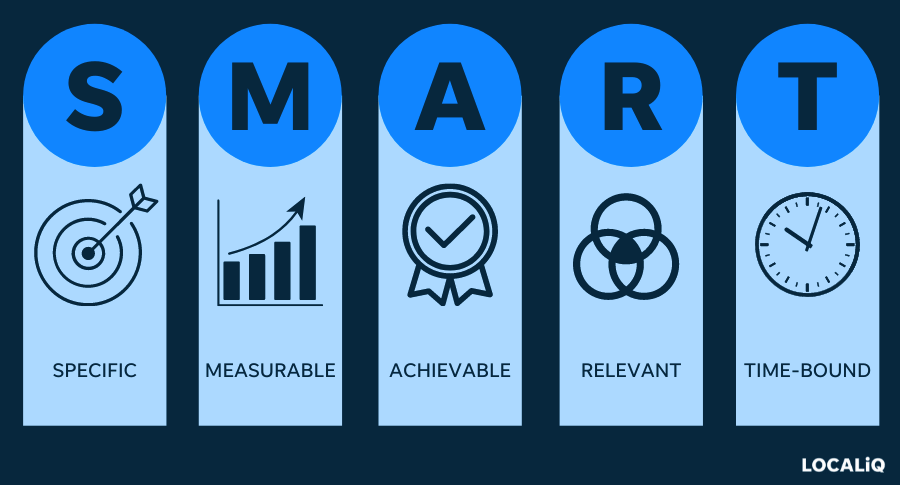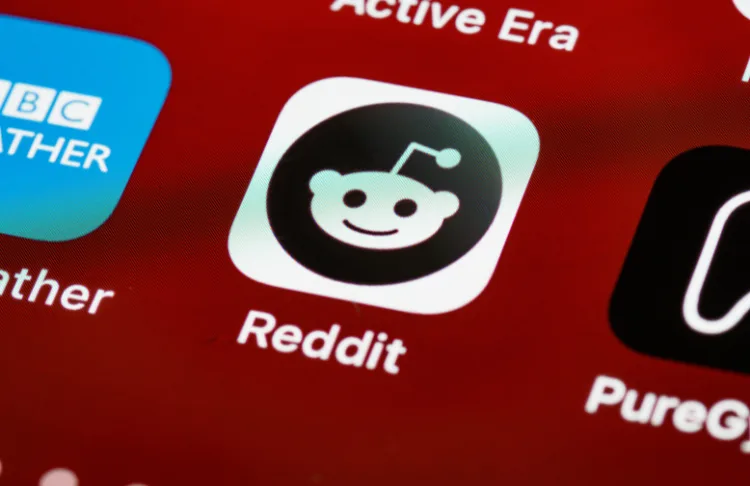With bills to pay and employees to care for, small business owners need to be smart with their spending. So any time you spend money, you want to be sure the expense is worthwhile.
Many small business owners are hesitant to spend on marketing because they struggle to directly measure the payoff. Sound familiar? Today, we’ll show you how to prove the fruits of your marketing labor by digging into the following:
- What is marketing ROI?
- What is a good ROI for your business?
- How to measure marketing ROI.
- How you can improve your marketing ROI.
When you understand what marketing ROI is and how to measure it, you can set your marketing budget with greater confidence all while refining your approach to get even more value out of your marketing spend.

What is marketing ROI?
ROI stands for return on investment. Marketing ROI is a calculation of how much you spent on marketing in relation to how much revenue it generated in return.
Of course, the trick with calculating marketing ROI is parsing out how much business is a direct result of a particular marketing effort versus how much is driven by other factors. Particularly in today’s digital world, it can feel near impossible to sort out where certain customers came from (more on that later).
How do you calculate ROI in marketing?
For now, let’s stick with a basic formula for calculating marketing ROI:
(Sales Growth – Marketing Cost) / Marketing Cost = Marketing ROI

Let’s put this formula into action with an example:
You’re opening a new ice cream shop. To advertise, you run an ad in the local paper. All told, including creative and cost of space in the paper, you spend $1,000. On your opening week, you sell $15,000 worth of ice cream.
In this case, you’d calculate your marketing ROI as:
(15,000 – 1,000) / 1,000 = 14/1
That gives you an ROI of 14:1. Essentially, for every single dollar spent on marketing, you earned $14.
The trick, though, is that you can’t be sure that everyone who bought ice cream from you did so because of your print ad. Maybe they just happened to be driving by. Or, perhaps they overheard someone talking about your shop in line at the grocery store.
Well, this slightly more involved formula calculates your marketing ROI while minding your organic growth.
(Sales Growth – Average Organic Sales Growth – Marketing Cost) / Marketing Cost = Marketing ROI

In this formula, you still include all of your sales growth (ex. $15,000), but you subtract your organic growth that can be attributed to other sources, like folks just walking past a new ice cream store in town or last week’s heatwave that drove more people to want a cool treat.
In this case, let’s say you attribute $7,500 worth of sales to organic growth. Those are the dollars you earned for reasons that are not directly attributable to your marketing spend. The new calculation would be:
(15,000 – 7,500 – 1,000) / 1,000 = 6.5
With organic growth removed, your marketing ROI for that specific print ad is 6.5:1.
What is a good ROI?
You understand how to get a number now, but what does that number mean?
Generally, a strong marketing ROI is 5:1. In other words, if you’re making five dollars for every one dollar spent, you’re doing well. An exceptional ROI is 10:1, where you’re earning 10 dollars for every one you spend.
If your marketing ROI is 2:1 or below, you’re likely losing money on your marketing investment. That’s because, by the time you factor in the costs to create and sell the product you’re marketing (known as cost of goods sold, or COGS), you’re likely in the red.
How can I improve my marketing ROI?
If your ROI isn’t above the recommended 5:1 threshold, that’s okay! With any marketing effort, there’s always room for improvement. The more specific you can get in setting objectives and tracking results, the more intelligence you’ll be able to gather to hone your marketing strategy and boost that ratio.
Here are our tips to maximize your marketing ROI:
1. Set SMART objectives
Any great marketing campaign starts with clear objectives. SMART objectives are specific, measurable, attainable, relevant, and time-bound.

Specific and measurable means your objectives need to be grounded in numbers. “We want to drive awareness around our retail store’s new product line” is not specific or measurable. “We want to sell 300 items from our new product line in the next month” is.
An objective must also be attainable. For example, if you typically sell 50 items per month, is aiming to sell 300 items of your new product realistic?
In terms of relevancy, be sure that your objectives connect with one another and align with the rest of your “big picture” business plan.
Time-bound means you have a specific timeframe in which you hope to achieve your objective. Don’t leave it open-ended, or it becomes impossible to track.
Once you’ve defined your SMART objectives for marketing ROI, you can settle on the right metrics to measure the success of your campaign.
2. Make it easy to track results
One of the trickiest elements in calculating marketing ROI is knowing how to attribute revenue to your marketing campaign. Fortunately, modern marketing tactics make it easy for you to do just that.
QR codes and UTMs allow you to track when web traffic comes in from a specific source. This is true even when you’re advertising offline. A QR code on a printed postcard or customized URL on a poster can give you insight into who’s heading to your website from those sources.
While QR codes and UTMs are helpful, tracking technology tied to one reporting dashboard is the easiest and most accurate way to see marketing ROI.
(Get more ideas to track your leads for free here.)
Tracking incoming traffic using these tools makes it simple to draw a straight line from any marketing dollar spent on that ad to any revenues earned by those who visited your website and made a purchase.

If you’re not ready to jump into online tools to help you create UTMs or QR codes, you can still track your marketing ROI. For example, you can mail out postcards that offer a special deal should your customers bring them in-store. Every time someone hands over a postcard, that sale can be attributed to your postcard direct mail marketing campaign.
And don’t forget to audit your advertising accounts to make sure they’re operating efficiently.
3. Personalize everything
Personalization is the new gold standard in marketing. In fact, 80% of consumers are more likely to engage with a brand when they’re greeted with a personalized experience.
If you want to improve your marketing ROI, it’s time to personalize your approach. Plus, it’s now easier than ever to create a consumer experience that’s personal through digital marketing.
Social media marketing allows you to direct your posts or ads towards people of a certain age, in specific geographic locations, and by interests.
If you run a home services company, targeting your local advertising towards new homeowners who might be in the market to make improvements to their property can help boost marketing ROI.
Moreover, you can bring your personalized marketing down to the individual level by sending a follow-up email to recent customers that suggest other related products. Or set up an exit popup ad with a discount offer for a targeted product based on the pages the consumer visited on your website.
Take personalization a step further and track customer behaviors across channels with a customer relationship management (CRM) tool. CRMs provide you with in-depth customer information, like what a person liked on your social media, which emails they opened, and when they called your customer service team with a question.

With that data and your hyper-targeted communications, your customers will have a greater likelihood of buying from you──improving your marketing ROI in the long run.
4. Embrace iterative marketing
As you learn more about your customers and the messaging that works, be willing to adjust and experiment. With each campaign, you discover something new about your audience and what resonates.
Consider using A/B testing on digital campaigns. You can measure the performance of each variation and lean into the tactics used in the more successful version.
By testing two versions of your campaign concurrently, you halve the amount of time it takes to run your experiment. This allows you to get to the results faster and adjust your approach sooner, which helps you improve marketing ROI more quickly.
Take control of your marketing ROI
Calculating marketing ROI may feel intimidating at first. However, without a clear picture of where your marketing dollars are going, you’ll always be shooting in the dark. Once you understand how your marketing spend correlates with your revenues, the fun can begin
As you develop a deeper understanding of what works with your audience, you have the power to continually improve your marketing ROI. The process of calculating and measuring marketing ROI is never done, but it does get easier and more exciting as you begin to see positive effects and strive for even greater results.






